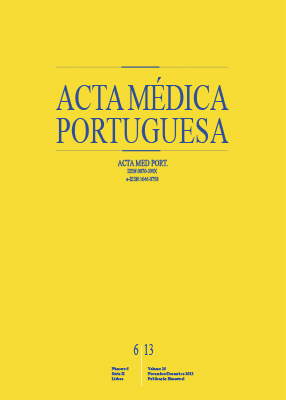Experience of the MALA Bag in the Open Abdomen Management in an Obstetrical Intensive Care Unit
DOI:
https://doi.org/10.20344/amp.2019Abstract
Introduction: Current indications for open abdomen management are damage control surgery, severe intra-abdominal sepsis, abdominal compartment syndrome, abdominal wall closure under tension and mass loss of the abdominal wall.
Objective: To describe the experience in open abdomen management using the MALA (mayor absorción de líquido abdominal [greater absorption of abdominal liquid]) bag at the Maternal-Perinatal Hospital Mónica Pretelini Saénz, Health Institute of the State of Mexico.
Material and Methods: This was a bidirectional, descriptive and observational study. All patients with the diagnosis of open abdomen managed with the MALA bag admitted to the Obstetric Intensive Care Unit from February 2009 to June 2012 were included.
Results: From 25 cases identified in the period of the study, seven were eliminated for incomplete files, remaining 18 cases for the analysis. The mean age was 31.5 years. 78% of the patients were multigravidas, 50% of them with a history of 2 or more deliveries, 83% had a previous cesarean section and 78% were hysterectomized. Evisceration was present in one patient. The main indication for surgical management was damage control. One patient died and a second was transferred to another institution, the rest were discharged by clinical improvement. 12 patients (67%) spent less than 14 days in the Obstetric Intensive Care Unit, only one patient required more
than 30 days in the unit. Discussion: Halve the women who required this surgical alternative, were above 30 years of age. Stressing is the fact that from the 18 admitted patients, 14 (78%) had undergone obstetric hysterectomy, with the etiology of uterine atony in most cases. Damage control surgery seems to be the most elective surgical option to use MALA bag followed by ACS and abdominal sepsis.
Conclusion: The MALA bag can offer an economic and effective surgical option for the open abdomen management as well as a
drainage technique.
Downloads
Downloads
Published
How to Cite
Issue
Section
License
All the articles published in the AMP are open access and comply with the requirements of funding agencies or academic institutions. The AMP is governed by the terms of the Creative Commons ‘Attribution – Non-Commercial Use - (CC-BY-NC)’ license, regarding the use by third parties.
It is the author’s responsibility to obtain approval for the reproduction of figures, tables, etc. from other publications.
Upon acceptance of an article for publication, the authors will be asked to complete the ICMJE “Copyright Liability and Copyright Sharing Statement “(http://www.actamedicaportuguesa.com/info/AMP-NormasPublicacao.pdf) and the “Declaration of Potential Conflicts of Interest” (http:// www.icmje.org/conflicts-of-interest). An e-mail will be sent to the corresponding author to acknowledge receipt of the manuscript.
After publication, the authors are authorised to make their articles available in repositories of their institutions of origin, as long as they always mention where they were published and according to the Creative Commons license.









